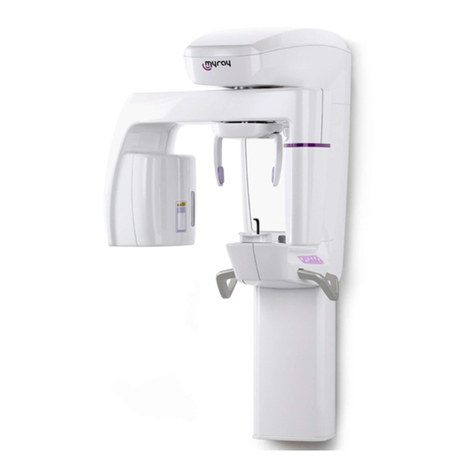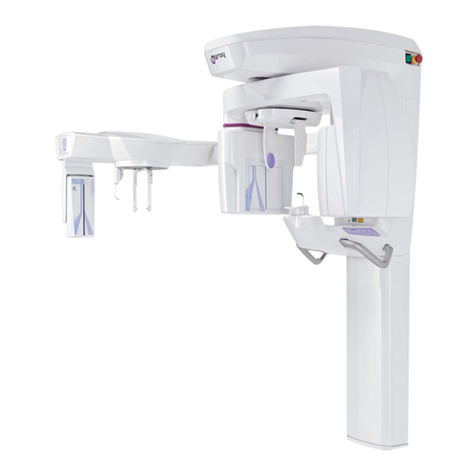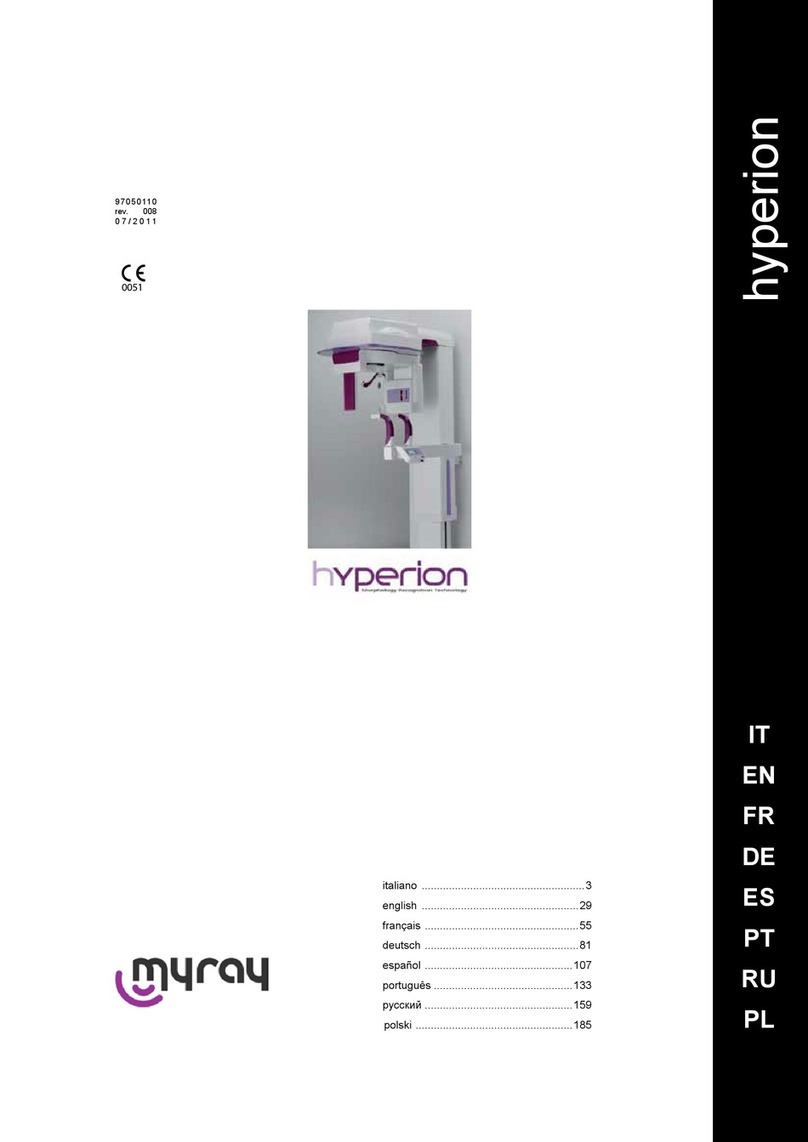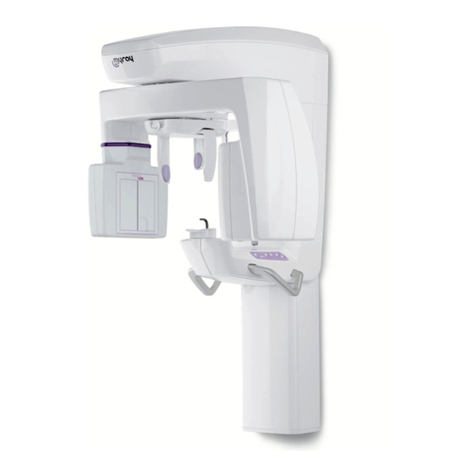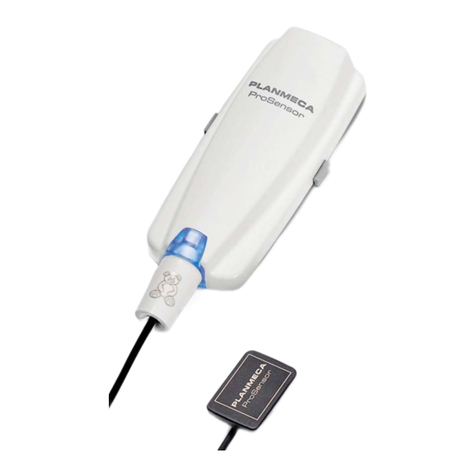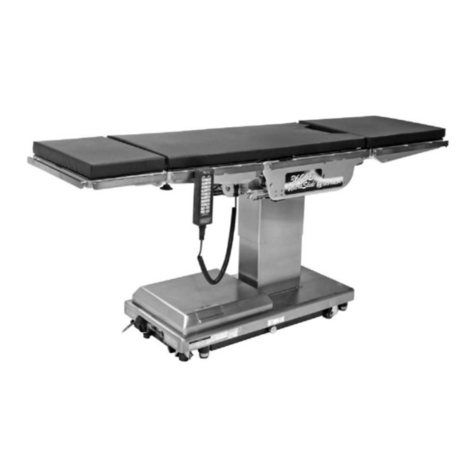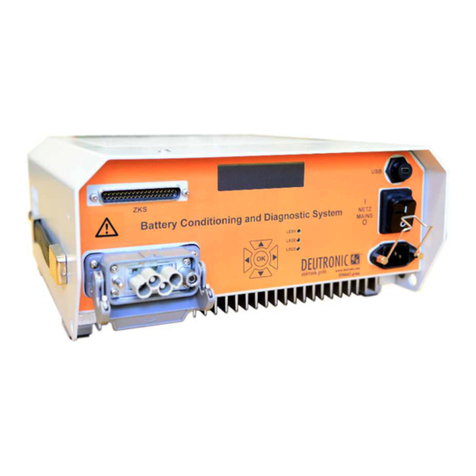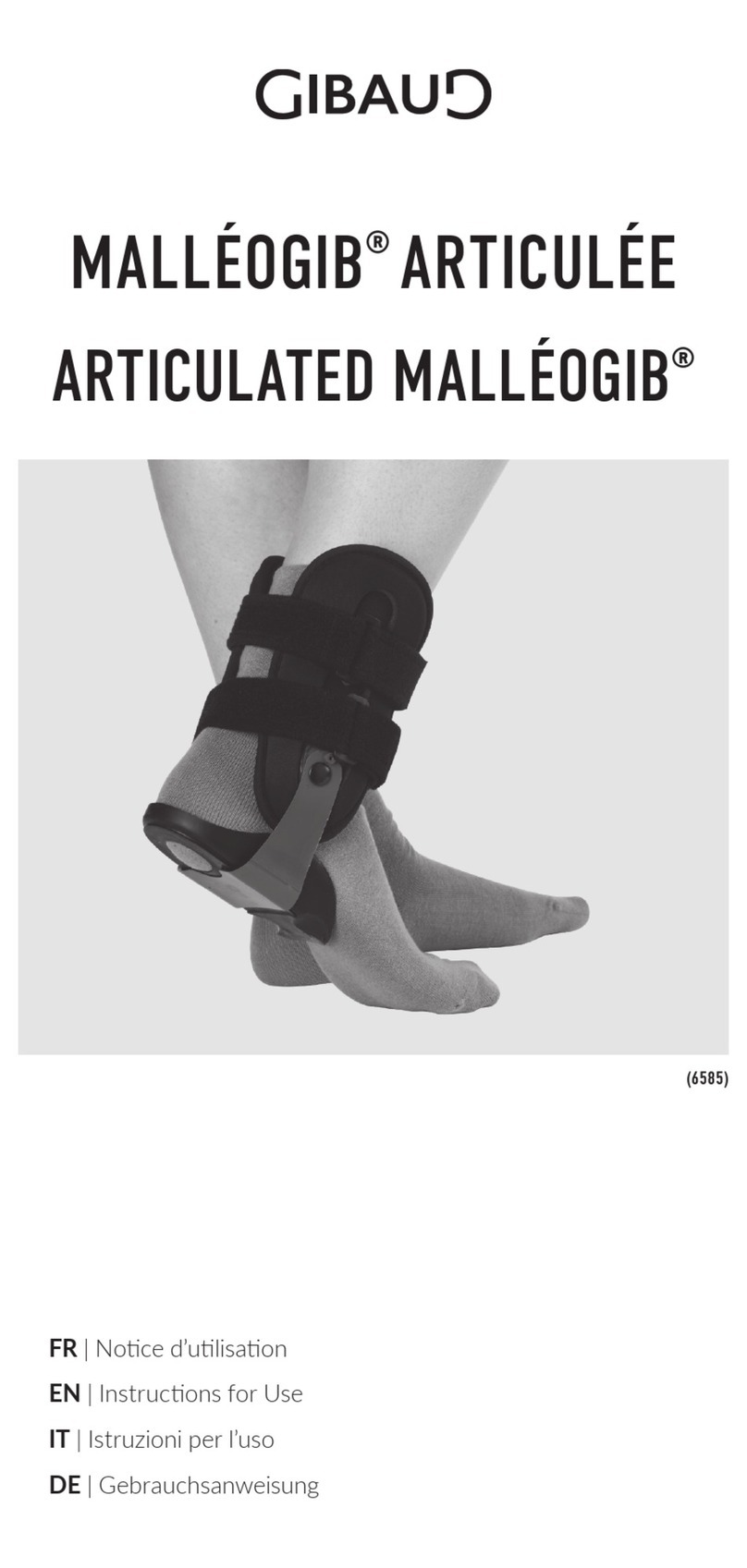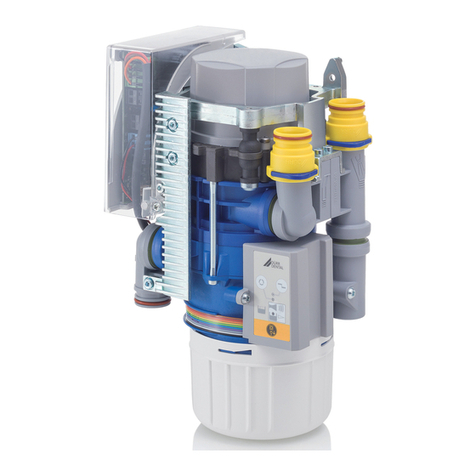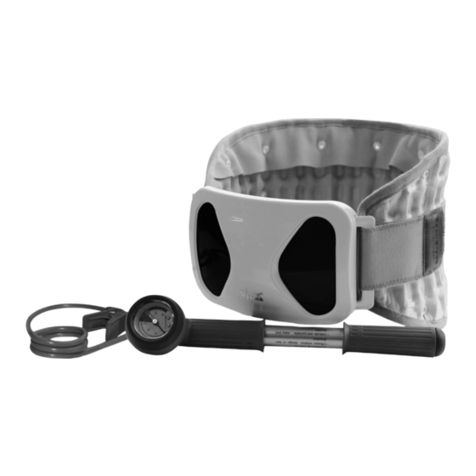Myray ZEN-X User manual

97050937
Rev. 04
2020-04
ZEN-X / ZEN-Xi
EN

2
OPERATOR'S MANUAL
EN
Contents
1. INTRODUCTION AND INDICATIONS FOR USE .....................................................................................................3
1.1. DESCRIPTION OF THE MANUAL .......................................................................................................................3
1.2. GENERAL WARNINGS........................................................................................................................................4
1.3. STANDARDS AND REGULATIONS ....................................................................................................................4
1.4. STYLISTIC CONVENTIONS ................................................................................................................................5
1.5. WARNINGS FOR USE .........................................................................................................................................6
1.6. GENERAL SAFETY WARNINGS.........................................................................................................................7
1.6.1. INSTALLATION CONDITIONS .....................................................................................................................7
1.6.2. CONDITIONS OF USE .................................................................................................................................7
1.6.3. USE OF THE CENTERING DEVICE ............................................................................................................8
1.6.4. WARRANTY ..................................................................................................................................................9
1.6.4.1. SOFTWARE NOT COVERED BY WARRANTY..................................................................................9
1.6.4.2. LIMITS OF RESPONSIBILITY.............................................................................................................9
1.6.5. ELECTROMAGNETIC SAFETY ...................................................................................................................9
1.6.6. PROTECTION AGAINST RADIATION .......................................................................................................13
1.6.7. SAFETY AND HEALTH CARE....................................................................................................................13
1.6.8. MAINTENANCE AND DISPOSAL...............................................................................................................13
1.6.9. CLEANING AND DISINFECTION ...............................................................................................................15
1.6.9.1. CLEANING AND DISINFECTION OF THE INTERFACE SUPPORT ON DENTAL UNIT ................15
1.6.9.2. CLEANING AND DISINFECTION OF THE SENSOR AND ITS POWER CABLE ............................17
1.6.10. HYGIENE PROCEDURES FOR PATIENT PROTECTION...................................................................17
1.6.11. APPLIED PARTS ...................................................................................................................................18
2. DESCRIPTION OF DEVICE AND BOX CONTENTS..............................................................................................19
3. DESCRIPTION OF OPERATION ............................................................................................................................20
3.1. TURNING THE SENSOR ON AND OFF............................................................................................................20
3.2. SENSOR CONNECTION AND CONTROL ........................................................................................................20
3.2.1. STAND-ALONE SENSOR...........................................................................................................................20
3.2.2. SENSOR INTEGRATED IN DENTAL UNIT................................................................................................21
3.3. PATIENT POSITIONING ....................................................................................................................................23
3.4. ACQUIRING AN X-RAY IMAGE.........................................................................................................................24
3.5. STATUS INDICATIONS .....................................................................................................................................24
3.6. QUALITY OF THE X-RAY IMAGES ...................................................................................................................26
4. SPECIFICATIONS...................................................................................................................................................28
4.1. TECHNICAL SPECIFICATIONS ........................................................................................................................28
4.2. COMPATIBILITY WITH X-RAY GENERATORS................................................................................................29
4.3. MINIMUM PREREQUISITES .............................................................................................................................30
5. EQUIPMENT IDENTIFICATION..............................................................................................................................31
6. TROUBLESHOOTING.............................................................................................................................................32

EN
OPERATOR'S MANUAL
3
1. INTRODUCTION AND INDICATIONS FOR USE
ZEN-X / ZEN-Xi are digital intraoral sensors intended for acquiring intraoral digital images when exposed to X-rays,
for diagnostic radiographic examination of the human dentition (teeth, maxillary area and oral structures).
The produced digital images are automatically transmitted via digital connection to a PC.
The devices can be used as accessories to legally marketed components such as conventional X-ray tubes and
software for the acquisition of images.
The devices are managed and used by doctors, dentists, radiologists and other legally qualified professionals.
The intraoral sensor ZEN-X / ZEN-Xi has been developed to simplify the entire intraoral x-ray acquisition procedure
and display the images on a computer screen. Thanks to the new shape ergonomics, these sensors allow an easy
intraoral positioning. The smoothed edges and rounded corners comfortably adapt to the shape of the patient’s
mouth, ensuring an easy positioning. ZEN-X / ZEN-Xi sensors are available in two interchangeable sizes to satisfy
various diagnostic requirements.
The sensor electronic module is compatible with the extremely fast USB®2.0 standard, thereby cutting down the time
that elapses between x-ray exposure and display of the image on the computer screen to a few seconds.
- ZEN-X is designed as a portable device (stand-alone);
- ZEN-Xi is constructed to be integrated in dental units that are mechanically compatible.
In ZEN-X, the USB®connection makes the system convenient and portable. In fact, no power supply adapters are
needed as power is fed directly through the USB®port, thanks to the low consumption requirements.
In ZEN-Xi, the X-ray sensor is placed on-board the dental unit like any other instrument on the dentist’s board.
A computer and program to view x-ray images are required for use of both versions. If used in conjunction with a
dental office practice management software, the x-ray images can be associated to each patient and saved for
processing and viewing when required.
The sensor system makes use of a communication standard called TWAIN®, adopted by many electronic products
such as scanners and digital cameras. TWAIN®ensures product compatibility with all the best programs for digital
image management and processing.
Regardless of the selected program, refer to the manual supplied together with the program for all the warnings,
precautions and operating instructions.
The sensor is supplied together with software called iCapture, that assures the x-ray images are correctly transferred
from the electronic module to the computer.
USA federal law restricts this device to sale by or on the order of a licensed healthcare practitioner.
Use a third-party software for the management and treatment of digital images acquired with the intraoral
sensor only as long as such software does not alter the content of the images provided by iCapture
independently from the user's will.
The Manufacturer’s website contains a list of authorised agents.
1.1. DESCRIPTION OF THE MANUAL
This Manual is an essential consultation tool and contains important information and instructions for the use
of the digital sensor.
These instructions describe how to properly and safely use the sensor.
Carefully read and familiarise yourself with the entire contents of the Manual before attempting to use the
product.
To use the software, refer to the specific manual.
The Manual is only provided in electronic format and can be consulted directly on the PC screen during use.
It is advisable to keep a copy of this manual within reach with the aim of training the operators and as guide
for consultation during the use of the device. This manual also contains all the essential information for the
safety of patient, operator and device.
It is therefore advisable to read carefully the paragraphs on the safety rules.

4
OPERATOR'S MANUAL
EN
The original text is in Italian; this is a translation from the original in Italian.
This User’s manual refers to both the ZEN-X and ZEN-Xi systems (indicated as “the sensor”, “the digital
sensor”, or “the device” to mean the same), providing specific details only when there are differences
between the two versions.
The manual refers to a “computer”, Personal Computer, “work post”, WorkStation or WS indifferently. In all
cases, the computer used will have to satisfy the technical requirements indicated.
1.2. GENERAL WARNINGS
Please pay particular attention to the sections in the manual where the following symbols appear:
Patient or operator safety-related warnings.
Important information on product use.
The ZEN-X / ZEN-Xi sensor and the relevant software iCapture are developed and manufactured by Cefla S.C. –Via
Selice Prov.le 23/A 40026 Imola (Italy), hereinafter referred to as the Manufacturer, which is the manufacturer and
distributor in compliance with the EC Medical Device Directive.
WARNING: These instructions explain how to correctly use the ZEN-X / ZEN-Xi sensor. As regards the
iCapture software instructions, consult the specific manual. Carefully read
both manuals before attempting to use the sensor and program.
In order to use the ZEN-X / ZEN-Xi sensor, software for capturing and saving the images is needed that is not part of
the ZEN-X / ZEN-Xi sensor. Consult the relative manual for information about installation and use of the image
management software.
- The contents of this publication are valuable trade secrets and must not be given to third parties, stored, copied,
reproduced, disclosed or transferred in any manner (via computer, photocopies, translations or other means)
without the prior written consent of the Manufacturer.
- The Manufacturer pursues a policy of continual improvement of its products; therefore, some specific instructions
and images contained in this manual may differ from the product purchased.
- The Manufacturer reserves the right to make changes without prior notice.
- The information, technical specifications and illustrations contained in this publication are not binding. The
Manufacturer reserves the right to make technical modifications and improvements without modifying these
instructions.
- All the registered trademarks and the product names mentioned are the property of the respective owners.
- Carefully read the USER LICENSE AGREEMENT before using the product. When installing the program, you will
explicitly be asked to accept the agreement; if you do not accept, the program cannot be installed.
WARNING: In accordance with privacy laws in force in several countries, all sensitive personal information
must be adequately protected. In addition, patients must sign a consent form before personal information or
images are transmitted across networks. If required by the laws in force, dentists are obliged to protect data
using a protection password. Refer to the Microsoft® Windows operating system manual for data access
protection methods by means of password.
It is recommended to regularly (at least once a week) make a backup copy of the databases. This will allow
restoring the data in the event of damage to the hard disc of the PC or the databases themselves.
1.3. STANDARDS AND REGULATIONS
The sensor was designed to meet the requirements of Directive 93/42/EEC as amended (namely Directive
2007/47/EC) concerning Medical Devices, based on which it is classified as class IIa medical device.
The CE marking certifies compliance of the product as described herein with Medical Device Directive
93/42/EEC and subsequent amendments.

EN
OPERATOR'S MANUAL
5
The sensor has been manufactured in compliance with the IEC standards on safety of electro-medical devices of
similar type and particularly with the following technical standards:
-IEC 60601-1:2005 + A1:2012 - General requirements for basic safety and essential performance.
-IEC 60601-1-2:2014 (4th Ed.) - General requirements for basic safety and essential performance - Collateral
Standard: Electromagnetic disturbances - Requirements and tests.
-IEC 60601-1-6:2010 + A1:2013 (3rd Ed.) - General requirements for safety - Collateral Standard: Usability
including IEC 62366: Application of usability engineering to medical devices.
-IEC 62304:2006 (1st Ed.) - Software life cycle processes.
-ANSI/AAMI ES60601-1: 2005 / A2:2010 - US NATIONAL DIFFERENCES Medical electrical equipment, Part 1:
General Requirements.
-CAN/CSA-C22.2 No. 60601-1:2008 - CA - CANADIAN NATIONAL DIFFERENCES to CAN/CSA-C22.2 No.
60601-1:2008.
The system is classified as Class II and Type B as far as safety is concerned, under IEC 60601-1.
1.4. STYLISTIC CONVENTIONS
The following symbols may be found on the device and in the manual:
Equipment compliant with directive 93/42/EEC as amended.
Notified body: IMQ S.p.A.
Applied part of type B, according to IEC 60601-1.
Product/equipment identification code.
Product serial number.
Manufacturer.
Date of manufacture (month / year).
It is necessary to read the user's manual before using the device.
Class II insulation.
Stand-by position, indicated on sensor support (only for the model integrated in dental unit).
Operating position, shown on the sensor support (only for the model integrated in dental unit).
Position for extraction of sensor support (only for the model integrated in dental unit).
Rest position, shown on the sensor support (only for the model integrated in dental unit).

6
OPERATOR'S MANUAL
EN
The symbol on the sensor support indicates that the part can be autoclaved at a maximum
temperature of 135°C (only for the model integrated in dental unit).
Symbol: dispose under directive 2012/19/EU.
USB®2.0 connection (as specified on USB® cable).
Ukraine compliance mark.
1.5. WARNINGS FOR USE
The device is designed to work only when connected to accessories equipped with adequate software interface. For
this reason, neither the sensor, electronic interfaces nor software components (“drivers” installed in computer and
“firmware” in the devices) are compatible with other commercial devices. Therefore use of the ZEN-X / ZEN-Xi
sensor and relevant software in conjunction with other commercial devices is not assured or recommended.
The digital sensor makes use of the TWAIN® protocol for data transmission. It can be used through any program
able to acquire images from TWAIN® peripherals (e.g. scanners, digital cameras). Medical programs should be used
as they assure data security and quality of the images.
Even though other software interfaces are compatible with the sensor and relevant software components, it is not
advisable to use other x-ray image acquisition software simultaneously in the same computer employed to capture
images with the sensor or use other software simultaneously for acquiring images in general (scanners, digital
cameras, etc.).
Some manufacturers of dental surgery management programs protect their products by purposely making them
incompatible with equipment manufactured by third parties. For this reason, it is not possible to guarantee full
compatibility of the sensor with all programs currently available.
We recommend to regularly make backup copies of all acquired images.
The PC should have adequate antivirus software and be used only as a work instrument.
The installation of new programs on the PC and the update of the operating system may interfere with the TWAIN®
driver or with the image acquisition software. After installing new programs in the computer or updating the operating
system, check system operation before attempting to use it on a patient.
Electronic apparatuses may cause or be subject to interferences when used near other electromagnetic equipment
such as mobile phones, personal computers equipped with Wireless LAN cards, microwave ovens. Keep the parts of
the sensor and Personal Computer used to acquire and save the x-ray images away from RF sources such as
wireless LAN cards, other radio devices, Home RF devices, microwave ovens; the recommended distance is at least
1 metre, 2 metres in the case of microwave ovens.
WARNING: In the event of Personal Computer failure while the x-ray image is being transferred (software
“crash”), in many cases the x-ray picture is stored in the electronic interface memory until it is successfully
transferred or the interface is shut off or disconnected. The manual procedure described in paragraph
“Recovering the last image acquired” of the iCapture user instructions can be carried out to recover the
image. This event is extremely unlikely as it takes just a few seconds to transfer the image from the
electronic control to the computer.
Consult the manuals that deal with the individual devices for instructions on how to use the equipment in conjunction
with the sensor (computer, x-ray unit, etc.).
Only specially trained technicians should install the other system components (computer or computer network,
software to manage and save images, x-ray generator, etc.). In particular, keep in mind that installation of x-ray
equipment must be checked and inspected by a qualified technician.
WARNING: The USB®2.0 connection required for the operation of the device is not a trivial electrical
connection but requires special cables (recognisable by USB®HiSpeed®marking).
To ensure its perfect operation, a single USB®cable cannot exceed the total length of 4.5m. Should it be

EN
OPERATOR'S MANUAL
7
necessary to install the sensor with longer cables, a USB®repeater must be compulsorily installed every
4.5m, and for a maximum of three cable sections (two repeaters).
WARNING: The sensor used to capture images is fragile and bothered by
electrostatic discharges. Handle it with care. Do not deform or squeeze it. Do not touch the electric contacts
when the connector is not plugged into the electronic control module.
Do not disconnect it while the interface is on; see paragraph 3 “DESCRIPTION OF OPERATION”.
1.6. GENERAL SAFETY WARNINGS
The instructions inform the user on how to properly operate the system. Read this manual thoroughly before
using the device.
The owner or manager of the installation site is responsible for verifying the compliance with local requirements
and/or requesting advice from a Qualified Expert. Pay special attention to compliance with legal obligations regarding
the protection of workers, the population and patients from radiation.
The main regulations are listed in this manual (1.3 - Standards and Regulations).
Do not use the system for tasks other than described as intended use (1 –Foreword and instructions for use), and do
not use it if you are not an expert in dentistry and radiology.
Law restricts sale and use of this device only to doctors, dentists or radiologists.
USA federal law restricts this device to sale by or on the order of a licensed healthcare practitioner.
1.6.1. INSTALLATION CONDITIONS
-The system must not be used if it shows any electrical or mechanical defect. Like for all medical electrical
systems, this device requires proper installation, use, maintenance and service with the aim of assuring safe
and efficient operation.
-For Europe, the electric system in the room where the device is installed must comply with the IEC 60364-7-
710 standards (requirements for electric systems in rooms used for medical purposes).
-Before installing the sensor software and drivers, ensure that programs using TWAIN® for image
management (cameras, digital cameras, scanners) are installed on the personal computer. Keep in mind that
any system drivers installed may interfere with operation of the programs and vice versa.
-It is recommended to use a dedicated computer for the device. This computer should be used only as a work
tool and any software programs that are not needed should be uninstalled.
-In order to use the device, the sensor software components have to be installed. Consult the iCapture
manual and refer to the relevant instructions.
-If the ZEN-Xi sensor is integrated in Manufacturer's dental chairs equipped with an incorporated Workstation,
no installation procedures are required as all the drivers and software needed are factory-installed.
For further details, refer to the installation template and the detailed instructions given in the service manual.
1.6.2. CONDITIONS OF USE
The equipment may only be used by authorised and adequately trained staff (physicians and paramedics).
Comply with all safety use requirements:
-Do not forget to turn off the main switch on the equipment before leaving the surgery.
-The equipment is not suitable for use in the presence of a mixture of flammable anaesthetic gas with oxygen
or nitrous oxide.
-This equipment must be stored properly so that it is kept in top working order at all times.
-The user must be present at all times when the equipment is turned on or ready for start-up. In particular,
never leave the equipment unattended in the presence of children or other unauthorised personnel in
general.
-The Manufacturer shall not be held responsible (under civil and criminal law) for misuse, carelessness or
improper use of the equipment.
-If any person who is not an authorised technician changes the product in any way by replacing parts or
components with other ones not used by the Manufacturer, they shall assume responsibility for the product.
Do not tamper with the equipment unless authorised by the Manufacturer.

8
OPERATOR'S MANUAL
EN
-Any computer, monitor, printer, mouse, keyboard and any other device connected to the device must be
compliant with ISO, IEC, EN or local standards.
-The Manufacturer is not responsible for problems or malfunction of parts and/or components not approved by
itself, not complying with the regulations and not installed by qualified technical personnel acknowledged by
the Manufacturer.
-Do not use electronic equipment in proximity of life support equipment (e.g. pacemakers or heart stimulators)
and hearing aids. Before using any electronic device in health facilities, always check that it is compatible
with the other equipment present.
Use the X-ray system associated with the sensor in compliance with national provisions on protection from
ionising radiation, such as:
(a) Each examination must be justified by evidence that the benefits outweigh the risks.
(b) Patients must wear leaded aprons with collar for thyroid protection.
(c) Before the examination, ask women of childbearing age if they are pregnant or if there is a possibility that
they can be. If so, the patient should not undergo the examination, unless she has seen a radiologist
belonging to an accredited hospital facility in order to evaluate, together with the patient and operator, the
benefits and risks associated with this type of procedure, taking into consideration the possibility to make
other types of examination.
(d) The operators must keep a safe distance, protect themselves with proper shielding and stay close to the
patient in the examination room only in the rare cases where the patient needs assistance. In the event that
the operators must remain in the examination room, they must protect themselves with a leaded apron
featuring a collar for thyroid protection.
(e) Inform the patient of the risks associated with the examination, acquire its informed consent and store
the related document.
In case of claims or for technical assistance, users in Brazil are required to contact the following email
Users in the US are required to use the following contact information:
Cefla North America Inc.,
6125 Harris Technology Blvd., Charlotte, NC, 28269 United States
The sensor system is directly powered by the Personal Computer USB®port. Therefore, it is necessary that the PC is
turned on and the sensor cable (in the case of ZEN-X model) or the electronic interface (in the case of the ZEN-Xi
model) is connected to a USB®port. If the ZEN-Xi system is installed in a dental chair equipped with integrated
Workstation, the above connections have already been made inside the dental chair’s system; therefore, just turn on
the workstation.
Insert the A-type USB®connector inside a free USB®port of the Personal Computer.
WARNING: It is possible to operate only if iCapture is turned on (see the iCapture manual for details about
installation and use).
1.6.3. USE OF THE CENTERING DEVICE
The sensor must be held in the correct position using a centering device in order to obtain good x-ray images.
Kits of special centering devices for front, rear, bite-wing periapical images and for endodontics are available on the
market. The individual components in the kits are also available as spare parts. Contact the dealer who supplied the
sensor to purchase spare centering devices.
In addition, universal centering devices such as RINN®Uni-Grip or KerrHawe®series Bite Senso or similar can be
used.
Always refer to the instructions included with the centering kit for details on use, cleaning and sterilization of the
centering device.
WARNING: NEVER grasp the sensor with grippers to avoid irreparable damage. Always use centering
devices specifically designed for use with digital x-ray sensors.
Always sterilize the centering device before using it with a patient. For centering device cleaning and
sterilization instructions, follow the conditions specified by centering device manufacturer.

EN
OPERATOR'S MANUAL
9
1.6.4. WARRANTY
The Manufacturer stands behind its products warranting safety, reliability and performance.
The warranty is effective from the date of installation of the product.
The product is covered for the warranty period indicated in the installation report and, in any case, not less than 12
months.
WARNING: The Manufacturer shall not be held liable for any personal injury or property damage arising
from failure to heed the following clauses.
The warranty is valid only under the following terms:
- closely observe the conditions specified in the warranty certificate;
- the equipment is only to be used as instructed in this manual;
- equipment installation, upgrade and technical support must be performed exclusively by personnel
authorised by the Manufacturer to carry out these operations;
- never open the equipment casing. Installation, repairs and, in general, any other operations requiring the
casing to be opened are to be performed exclusively by personnel authorised by the Manufacturer to
carry out these operations;
- equipment is to be installed in rooms that satisfy the requirements specified in the manual.
1.6.4.1.SOFTWARE NOT COVERED BY WARRANTY
The Software is supplied in its original condition and the Manufacturer shall not be held liable or warrant any original
defects or defects originating over time and shall not guarantee quality and proper operation of the software. In
addition, the manufacturer shall not honour or provide any warranty regarding conformity of the software to the
information given on-line or in electronic documentation or in any case made available except for the warranty on the
physical support, if damaged or unusable.
Any warranty is also excluded for Software integrated in - or otherwise being a part of - other Software applications
developed by third parties. As far as these applications are concerned, the Manufacturer also expressly declares not
to have carried out and not to carry out any inspection activity or other activities to guarantee the software operation.
1.6.4.2.LIMITS OF RESPONSIBILITY
In no case shall the Manufacturer or its suppliers be responsible for direct or consequential damages (including
damages for profit loss or lost earnings or savings, interruption of business activities, loss of data or information or
other economic losses) affecting the User or third parties as a consequence of the use or failure to use the Software,
also in the event that the Manufacturer had been warned of the possibility of such damages.
The present limitation of liability is applicable not just to cases of software use not in compliance with the
Manufacturer’s recommendations but also to cases of software use in compliance with the Manufacturer’s
recommendations.
1.6.5. ELECTROMAGNETIC SAFETY
It is recommended not to use electronic equipment in proximity of life support equipment (e.g. pacemakers or heart
stimulators) and hearing aids.
Before using any electronic device, always check that it is compatible with the other equipment present.
The device is intended for use in home healthcare environments, as described in IEC 60601-1-2. The device belongs
to CISPR 11 Class B Group 1 and complies with immunity test levels specified by IEC 60601-1-2 for home
healthcare environments.
Use of this equipment adjacent to or stacked with other equipment should be avoided, because it could
result in improper operation. If such use is necessary, this equipment and the other equipment should be
observed to verify that they are operating normally.
Use of accessories, transducers and cables other than those specified or provided by the manufacturer of
this equipment could result in increased electromagnetic emissions or decreased electromagnetic immunity
of this equipment and result in improper operation.

10
OPERATOR'S MANUAL
EN
Portable RF communications equipment (including peripherals such as antenna cables and external
antennas) should be used no closer than 30 cm (12 inches) to any part of the device, including cables
specified by the manufacturer. Otherwise, degradation of the performance of this equipment could result.
Do not subject the device to strong electromagnetic disturbances. These disturbances could degrade the
following essential performance of the device:
•Capturing and transferring X-ray images without alteration in image quality;
•Correct maintenance of the “Ready” or “Stand-by” status.
Guidance and Manufacturer's declaration - Electromagnetic emissions
The ZEN-X / ZEN-Xi device is designed to operate in the electromagnetic environment specified below. The
customer or user of the ZEN-X / ZEN-Xi device should ensure that is used in such environment:
Emission test
Conformity
Electromagnetic Environment
RF emissions
CISPR 11
Group 1
The ZEN-X / ZEN-Xi device uses RF energy only for
its internal operation. Therefore, its RF emissions are
very low and they probably do not interfere with the
electronic devices nearby.
RF emissions
CISPR 11
Class B
The ZEN-X / ZEN-Xi device is suitable to be used in
all rooms, including the domestic ones, and places
directly connected to a public low-voltage line that
supplies buildings for domestic purposes.
Harmonic emissions
IEC 61000-3-2
Not applicable
Voltage fluctuations/flicker
IEC 61000-3-3
Not applicable

EN
OPERATOR'S MANUAL
11
Guidance and Manufacturer's declaration - Electromagnetic immunity
The ZEN-X / ZEN-Xi device is designed to operate in the specified electromagnetic environment. The customer
or the user of the device must ensure its use in an electromagnetic environment with the following features:
Immunity test
IEC 60601-1
test level
Conformity
Electromagnetic Environment
Electrostatic discharge
(ESD)
IEC 61000-4-2
with contact ±8 kV
in air ±15 kV
IEC 60601-1-2
Test level
Floors must be made of wood,
concrete or ceramic tiles. If
floors are covered with synthetic
material, the relative humidity
should be at least 30%.
Transients/burst
IEC 61000-4-4
±2 kV for power lines
±1 kV for input/output
lines
IEC 60601-1-2
Test level
The power supply line quality
should be that of a typical
commercial or hospital
environment.
Over-voltage
IEC 61000-4-5
±1 kV across phases
±2 kV across phase(s)
and ground
IEC 60601-1-2
Test level
The power supply line quality
should be that of a typical
commercial or hospital
environment.
Voltage drops, short
blackout or voltage
variations on the input
supply lines
IEC 61000-4-11
U
t= 0% (at 0°, 45°,
90°, 135°, 180°, 225°,
270°, 315°) for 0.5
cycles
U
t= 0% for 1 cycle
U
t= 70% (at 0°) for
25/30 cycles
U
t= 0% for 250/300
cycles
IEC 60601-1-2
Test level
The power supply line quality
should be that of a typical
commercial or hospital
environment. If the ZEN-X /
ZEN-Xi user requires a
continuous operation also in
case of blackout, it is
recommended to power the
ZEN-X / ZEN-Xi with
uninterruptible power supply or
batteries.
Magnetic field at network
frequency (50/60 Hz)
IEC 61000-4-8
30 A/m
IEC 60601-1-2
Test level
The magnetic fields at network
frequency should feature levels
typical of a standard commercial
or hospital environment.
NOTE:
U
tis the AC grid voltage before test level application.

12
OPERATOR'S MANUAL
EN
Guidance and Manufacturer's declaration - Electromagnetic immunity
ZEN-X / ZEN-Xi is designed to operate in the electromagnetic environment specified below. The customer or user
of the ZEN-X / ZEN-Xi device should ensure that is used in such environment.
Immunity test
Test level under
IEC 60601
Level of
conformity
Electromagnetic environment - guide
The RF communication devices (portable and mobile)
must not be used at a distance from ZEN-X / ZEN-Xi
and its components, including cables, lower than the
recommended distance using the corresponding
equation applicable to the transmitter frequency.
Conducted RF
EN 61000-4-6
3 V
from 150 kHz to
80 MHz
6V
ISM frequencies
IEC 60601-1-2
Test level
Recommended distance
d =
1.2 x √P
Radiated RF
EN 61000-4-3
10 V/m
From 80 MHz to
2.7 GHz
IEC 60601-1-2
Test level
d =
1.2 x √P
80 MHz to 800MHz
d
=
2.3 x √P
800 MHz to 2.7GHz
Where P is the maximum output power of the
transmitter in Watt (W) according to the transmitter
Manufacturer, and d is the recommended distance in
metres (m).
The field intensity of the fixed RF transmitters,
determined based on an electromagnetic site, could
be lower than the conformity level in each frequency
interval.
Near the equipment with the following symbol
interferences can be caused:
Recommended distance between the RF portable and mobile communication devices and ZEN-X / ZEN-Xi
ZEN-X / ZEN-Xi is designed to operate in the electromagnetic environment with control of the RF irradiated
disturbances. The customer or the user of the ZEN-X / ZEN-Xi device could help in preventing electromagnetic
interferences ensuring a minimum distance between the RF mobile and portable communication devices
(transmitters) and ZEN-X / ZEN-Xi, as indicated below, in relation to the maximum output power of the radio-
communication equipment.
Transmitter maximum nominal output
(W)
Distance according the transmitter frequency
(m)
from 150 kHz to 80
MHz
d = 1.2 x √P
from 80 MHz to 800
MHz
d = 1.2 x √P
From 800 MHz to 2.7
GHz
d = 2.3 x √P
0.01
0.12
0.12
0.23
0.1
0.38
0.38
0.73
1
1.2
1.2
2.3
10
3.8
3.8
7.3
100
12
12
23
For transmitters having a maximum nominal output power not listed above, the recommended distance d in metres
(m) can be determined using the corresponding equation applicable to the transmitter frequency where P is the
maximum output power of the transmitter in Watt (W) according to the transmitter Manufacturer.
NOTE 1 At 80MHz and 800MHz it is necessary to apply the distance defined for the highest frequency interval.
NOTE 2 These guidelines could not be applicable to all situations. The electromagnetic propagation is influenced
by the absorption and reflection of structures, objects and people.

EN
OPERATOR'S MANUAL
13
1.6.6. PROTECTION AGAINST RADIATION
The digital sensor must be used together with an intraoral x-ray system. As such, the system exposes the
patient and the operators to the risks deriving from radiation. It must be used in compliance with the safety
regulations set out in the radiation protection standards in force in the country of use. Some requirements
are listed below:
- Start X-ray emission only from the control room. The radiation room must be adequately shielded (if
required by regulations currently in force in the country of use).
- Make sure the radiation room’s doors are closed before starting the examination.
- Only the patient shall be present in the radiation room during X-ray emission. If the presence of a person
is necessary during the examination (for example to help patients who are not self-sufficient), personal
equipment must be used to protect the individual against scattered radiation. In any case, no body parts
should be exposed directly to the X-rays. Patients may not be assisted by pregnant women or minors.
- The following points must always be observed:
- During exposure, keep a distance of at least 2 metres from the X-ray source. For installations in
Canada, the required distance is 3 metres.
- Anyone not directly involved with the patient should be outside the room where the examination is
carried out or stand behind a lead shield or lead glass panel during exposure.
- Make sure that the operator can communicate verbally and visually with the patient.
- If required, use a dosimeter for personal monitoring.
- Full use must be made of all radiation protection devices, accessories, and procedures available to
protect the patient and operator from X-ray radiation, especially for children.
1.6.7. SAFETY AND HEALTH CARE
HAZARD:
- The digital sensor is a medical device for the acquisition of intraoral X-rays. It is intended for use only by
qualified dental professionals. Do not use the system for tasks other than the acquisition of intraoral X-
rays, and do not use it if you are not an expert in dentistry and radiology.
- Do not use electronic equipment in proximity of life support equipment (e.g. pacemakers or heart
stimulators) and hearing aids. Before using any electronic device in health facilities, always check that it
is compatible with the other equipment present.
- In order to prevent the transmission of infectious diseases between patients, it is essential to always use
disposable hygienic covers. Disposable covers are class I medical devices and cannot be replaced with
other protections having lower specifications. Contact the dealer who supplied the sensor or disposable
covers to obtain additional disposable covers.
- Cover with disposable covers all components that will be in contact with dental personnel's hands and
might be contaminated by indirect contact with the mouth of the patient. In particular, be careful when
handling the Personal Computer mouse, keyboard or touch screen.
- Never use the device in the presence of mixtures of flammable anaesthetic gas with air, oxygen or
nitrogen protoxide.
- Some parts (USB®cable, silicone rubber protection, disposable covers, centering device components,
packing components, x-ray sensor) may cause choking if ingested or improperly used. Avoid
unintended, inappropriate and misuse and keep out of reach of children.
- Take care to the sensor temperature when applied in the oral cavity: the sensor can reach a
temperature up to 12 degrees higher than the ambient temperature. The software coming with the
sensor implements, during periods of non-use, timing for sensor switch-off/stand-by modes, in order to
limit the temperature increase. Assess the sensor temperature and decide whether it is necessary to
allow it to cool down after heavy usage, before reactivating it for use on patients with dressings, wounds
or those particularly sensitive (e.g., paediatric patients).
1.6.8. MAINTENANCE AND DISPOSAL
The device does not contain parts that can be repaired directly by the user. In the event of a malfunction, do not
attempt to carry out maintenance operations, but directly contact the Manufacturer or its local distributor at the
numbers indicated in the warranty certificate. If the apparatus has to be returned to the Manufacturer or Service

14
OPERATOR'S MANUAL
EN
Centre for any reason, completely disinfect the outside of the apparatus with a specific product (see paragraph
“Cleaning and disinfecting”) and send it back preferably in its original box.
No electronic parts of the sensor require maintenance. If the sensor or interface casings are opened to reach the
circuits inside, devices may be broken, the protective means for electric safety may be disabled and the warranty will
become null and void.
Do not use the sensor on a patient if a system malfunction is present or suspected.
Preventive maintenance
Inspect PC connection cables or the dental unit at regular intervals. Check the connection cable to the computer, the
monitor, the keyboard, the mouse and the printer according to the Manufacturer instructions.
Component and accessory storage
Components and accessories must be stored and handled with care.
Any provided components and accessories must be stored and handled in compliance with the relevant technical
specifications.
Malfunctions
In case the system does not work as described in this manual, contact the technical service immediately.
System inspection checklist
The following checklist indicates the recommended time intervals of the various system checks.
For further information contact your local distributor.
Component
Activity
Time interval
Global system
Visually inspect the system to find any
damage or physical defect of the sensor or
connection cables.
Once a week
Labelling
Visually check label for damage and
readability.
Once a month
Global system
Conduct a test by capturing x-ray images
using a phantom
Once a month
Global system
Check image quality as required by local
regulations, using for instance a phantom
Quart or similar device.
Once a month
Personal Computer
Check proper transfer of an image from
sensor to PC.
Once a month
In case of failure of the prescribed checks, contact your local distributor.

EN
OPERATOR'S MANUAL
15
Scrapping
At the end of its lifetime, dispose of the device in accordance with the regulations in force. It is also advisable to
disinfect all the external parts of the device before disposal and to separate the materials for differentiated waste
collection.
Dispose of disposable covers as “special waste”.
In compliance with Directives 2011/65/EU and 2012/19/EU regarding restriction of the use of certain hazardous
substances in electrical and electronic equipment along with waste electrical and electronic equipment, it is forbidden
to dispose of this equipment in the municipal waste stream as unsorted municipal waste. When purchasing a new
device of an equivalent type, one for one, the device that has come to the end of its lifetime should be returned to the
distributor for disposal. As regards reuse, recycling and other forms of recovery of waste electrical and electronic
equipment, the Manufacturer carries out the functions defined by current local laws. Appropriate differentiated waste
collection for subsequent recycling treatment and environmentally friendly disposal contributes to preventing possible
negative effects on the environment and health and encourages recycling of the materials of which the device is
made up. The crossed-out bin symbol on the device indicates that the product must be collected separately from
other waste at the end of its useful life. Under local legislation, fines can be imposed if the equipment is disposed in
an illegal manner.
1.6.9. CLEANING AND DISINFECTION
Cleaning is the first step required for any disinfection process. Physically scrubbing with detergents and
surface-active substances and rinsing with water removes a considerable amount of microorganisms. If the
surface is not first cleaned, the disinfection process cannot be successful.
If a surface cannot be adequately cleaned, it should be protected with barriers.
1.6.9.1.CLEANING AND DISINFECTION OF THE INTERFACE SUPPORT ON DENTAL UNIT
The outside of the interface on dental unit, if any, must be cleaned and disinfected with a hospital disinfectant
labelled as effective against human immunodeficiency virus (HIV) and hepatitis B virus (HBV) (i.e. low-level) or a
hospital tuberculocidal disinfectant (i.e., intermediate-level) specifically designed for small surfaces. Follow the
manufacturer’s operating instructions.
The great variety of medical and chemical products used in a dental practice may damage painted surfaces or plastic
materials parts. Researches and tests performed show that the surfaces cannot be fully protected against the harsh
action of all products available on the market. We therefore recommend protecting with barriers whenever possible.
The harsh actions of chemical products also depend on the amount of time they are left on the surfaces. It is
therefore important not to leave the product on the surfaces longer than the time specified by the manufacturer.
Given the aggressiveness of the active principles used in disinfectants, we recommend to use products containing
the following maximum quantities of:
- 96% ethanol. Concentration: maximum 30 g per 100 g of disinfectant.
- Propanol. Concentration: maximum 20 g per 100 g of disinfectant.
- Combination of ethanol and propanol. Concentration: the combination of the two should be maximum 40 g
per 100 g of disinfectant.
The Manufacturer performed tests on the compatibility between the most common disinfectants and its own plastic
materials.
The test results indicated that the least aggressive agents are:
- Incidin Spezial (Henkel Ecolab).
- Omnizid (Omnident).
- Plastisept (ALPRO) (not tuberculocide as not an alcohol-based disinfectant).
- RelyOn Virkosept (DuPont).
- Green and Clean SK (Metasys) (not tuberculocidal as it is not an alcohol-based disinfectant).
WARNING: The same tests showed that the above-mentioned products can therefore be used by adopting,
however, the following precautions:
- Do not use products containing isopropyl alcohol (2-propanol, iso-propanol).
- Do not use products containing sodium hypochlorite (bleach).
- Do not use products containing phenols.
- Do not spray the selected products directly on the surfaces.
Never combine products with each other or with liquids other than the products listed above.

16
OPERATOR'S MANUAL
EN
- All products must be used as directed by the manufacturer.

EN
OPERATOR'S MANUAL
17
Cleaning and disinfecting instructions.
Clean and disinfect with disposable non-abrasive paper (avoid using recycled paper) or sterile gauze.
Do not use sponge cloths or, in any case, any material that can be reused.
WARNING:
- In order to clean equipment connected to the power mains, shut off the devices and disconnect the
power supply from the outlet before attempting to clean and disinfect the outside.
- ZEN-Xi, although it is built-in the dental chair, works through a USB®connection; it is therefore
mandatory to switch off the PC/WS it is connected to before removing the sensor support.
- All material used to clean and disinfect must be thrown away upon completing the procedure. Observe
current regulations when disposing the material.
Sterilize the sensor support only in an autoclave at a maximum sterilization temperature of 135°C.
WARNING:
- The sensor support is able to withstand 500 autoclave sterilization cycles.
- Always contact the Manufacturer to purchase genuine spare parts.
Recommendations for waste disposal.
Follow the manufacturer’s instructions when disposing whole disinfectant bottles.
Do not let the product into the municipal sewer systems and/or waterways.
1.6.9.2.CLEANING AND DISINFECTION OF THE SENSOR AND ITS POWER CABLE
WARNING:
The sensor is NOT suitable for autoclave sterilization.
The sensor and its power cable (USB® connector excepted) are protected against harmful penetration of water and
special substances and have therefore been assigned an IP67 rating.
For the external cleaning and/or disinfection of the sensor and its power cable (USB® connector excepted), use
gauze or cotton soaked in ethyl alcohol 70% v/v.
Recommendations for waste disposal.
Follow the manufacturer’s instructions when disposing whole disinfectant bottles.
Do not let the product into the municipal sewer systems and/or waterways.
WARNING:
All material used to clean and disinfect must be thrown away upon completing the procedure. Observe
current regulations when disposing the material.
1.6.10. HYGIENE PROCEDURES FOR PATIENT PROTECTION

18
OPERATOR'S MANUAL
EN
WARNING: Disposable hygienic protections are the main protection means against cross contamination
between patients. In order to prevent the transmission of infectious diseases between patients, it is essential
to always use disposable protections. Disposable protections are class I medical equipment and cannot be
replaced with other protections having lower specifications.
Disposable covers must comply with ISO 10993 standards on biocompatibility and be approved by control
bodies where required (e.g. FDA, EC).
Always replace sensor disposable hygienic covers before positioning a new patient.
Disposable hygienic protections must be stored in a dry and clean area and must not be exposed to direct
sunlight or UV radiation.
Cover with disposable protections all components that will be in contact with dental personnel's hands and
might be contaminated by indirect contact with the mouth of the patient. In particular, be careful when
handling the Personal Computer mouse and keyboard.
Before positioning the patient for a radiological examination, always cover the sensor with a new (non-
sterile) plastic protection in order to prevent cross contamination.
Note for users in Canada: ask your trusted dental material distributor for any plastic barrier that is suitable in
size and is marketed in Canada according to the local regulations in force.
In compliance with the provisions of Health Canada, bite protections are Class I equipment supplied by
authorised distributors as per MDEL database.
Disposable cover application instructions:
1) Place a disposable cover complete with its protective sheet on a flat
surface. Introduce the sensor through the opening at one end.
2) Push the sensor all the way into the disposable cover, paying attention
not to break the transparent material.
3) If present, remove the protective support sheet.
4) The operation is now completed.
5) After use, dispose of the disposable covers as “special” waste.
Use of a centering device guarantees that the sensor is perpendicular to
the x-ray tube and its sensitive area is centred. Use of a centering device
is strongly recommended. The clinician should choose the most suitable
one based on his/her own experience.
The centering device must comply with ISO 10993 standard concerning
biocompatibility. For further information on use of the centering device,
refer to paragraph 1.6.3.
1.6.11. APPLIED PARTS
The parts of the device or its accessories that, during standard use, necessarily come into contact with the patient, so
that the device may carry out its functions correctly, are: digital sensor, centering device and hygienic covers.
Not applied parts that might come into contact with the patient are the dental unit interface (only for ZEN-Xi model)
and USB®cable.

EN
OPERATOR'S MANUAL
19
2. DESCRIPTION OF DEVICE AND BOX CONTENTS
The X-ray sensor can be purchased in two different sizes (Size 1 and Size 2) in order to adapt to different sizes of
oral cavity.
The package contains:
Sensor package
X-ray sensor
USB®key with software, driver and electronic user's manual
Warranty certificate
Accessory to be integrated to dental unit
Interface for dentist’s board with sensor support and cable ring
Only use spare parts supplied or approved by the Manufacturer.
Do not connect standard USB®extensions to the digital sensor.

20
OPERATOR'S MANUAL
EN
3. DESCRIPTION OF OPERATION
Refer to the paragraphs below for information on X-ray sensor operation.
3.1. TURNING THE SENSOR ON AND OFF
For using the device, it is necessary to connect the X-ray sensor to the USB®port of a Personal Computer (ZEN-X
model) or to the appropriate connector on the interface integrated in the dental unit (ZEN-Xi model).
Connect the sensor to the USB®port of the PC (ZEN-X model)
Connect the sensor to the interface integrated in the dental
unit
(ZEN-Xi model)
To disengage the sensor from its housing, gently pull the cable from its USB®connector to disconnect it from the
USB®port of the Personal Computer (ZEN-X model) or of the interface (ZEN-Xi model). Do not exert lateral
movements or stress, and do not pull the cord.
The X-ray sensor is a delicate component, sensitive to electrostatic discharge. For this reason, it is
recommended to always extract ZEN-Xi from the interface in the dental unit when the interface is not active.
Always use the stand-by position to extract the sensor connector from its housing.
Do not unplug the USB®connection cable before the transfer of newly acquired images is completed.
3.2. SENSOR CONNECTION AND CONTROL
Sensor status is indicated by warning lights (only for the sensor integrated in dental unit) and displayed on the
Personal Computer. For further details on colour-coding and status symbols, also refer to 3.5 –“Status indications”.
3.2.1. STAND-ALONE SENSOR
This paragraph explains connection and control methods for the ZEN-X model, which can be directly connected to
the Personal Computer.
The sensor does not have any control button. As soon as it is connected to a PC, if iCapture Monitor is running
(factory default setting), the Driver TWAIN®will be automatically started for system initialisation.
At first, MyRay® Driver TWAIN®window will show a “WAIT” message on yellow background.
If sensor is connected, "WAIT" will be displayed on a yellow background in MyRay® Driver TWAIN®window and,
after a few seconds, "READY" will be displayed on a green background in MyRay® Driver TWAIN®window.
At this point, the sensor is ready to receive an x-ray image.
Other manuals for ZEN-X
1
This manual suits for next models
1
Table of contents
Other Myray Medical Equipment manuals
Popular Medical Equipment manuals by other brands
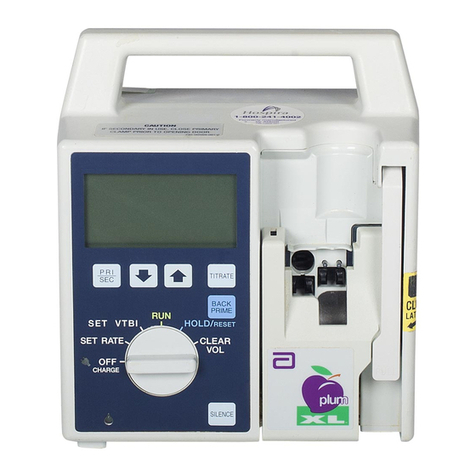
Hospira
Hospira Micro Macro plum XL System Operating Manual
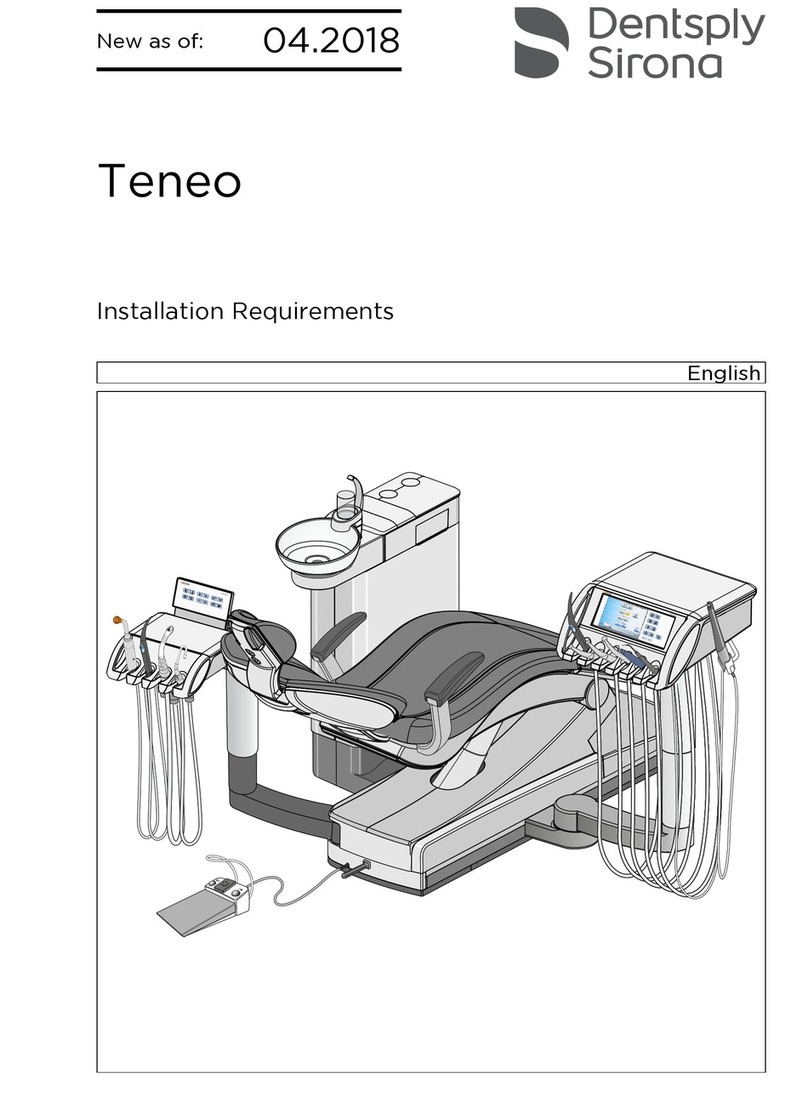
Dentsply Sirona
Dentsply Sirona TENEO Installation requirements
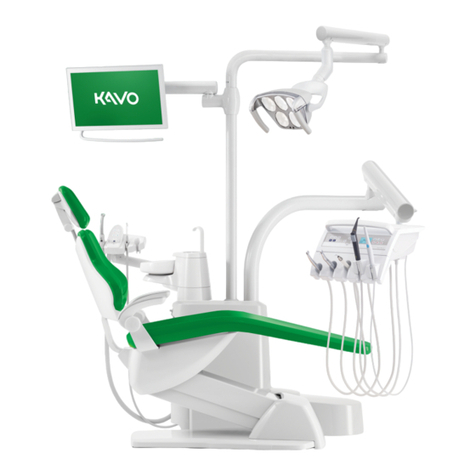
KaVo
KaVo KaVo Primus 1058 Life TM Care Instructions
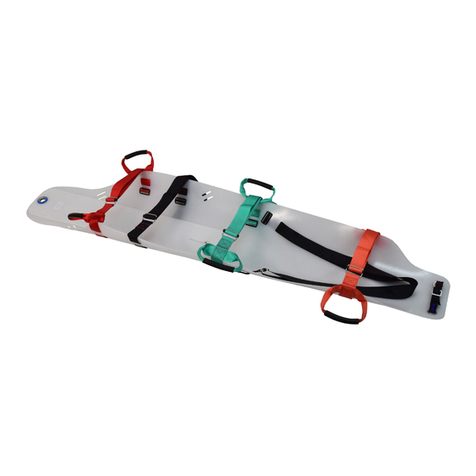
ABTECH SAFETY
ABTECH SAFETY SLIXRR Instruction & Maintenance Manua
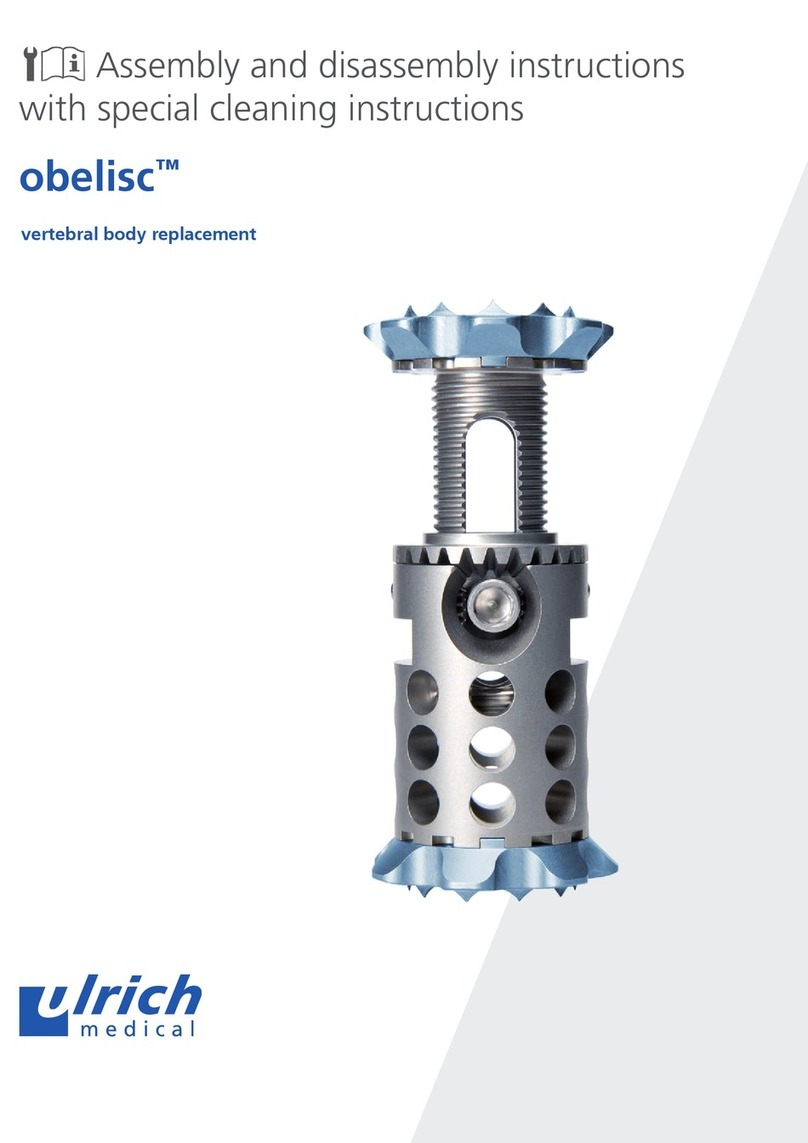
ulrich medical
ulrich medical Obelisc CS 2931 Series Assembly and disassembly instructions with special cleaning instructions
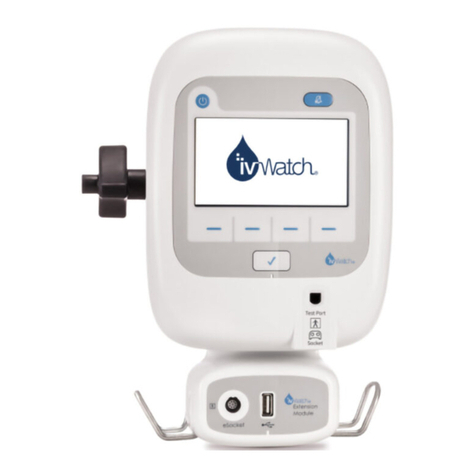
ivWatch
ivWatch 400 user manual
